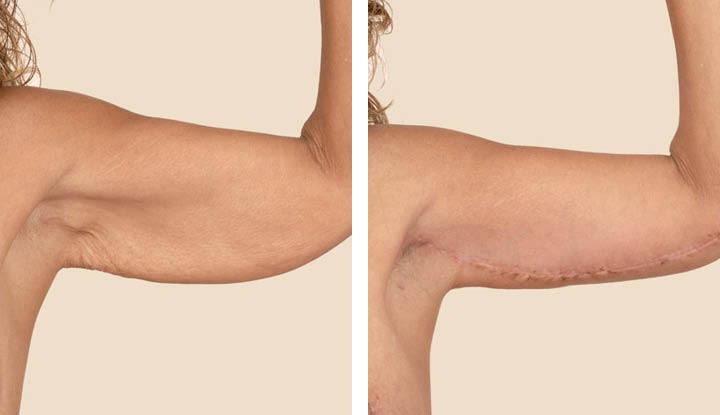Brachioplasty is a type of cosmetic surgery that can improve the appearance of your upper arms. It involves tightening sagging skin and supportive tissue. Surgeons also remove pockets of fat. It makes your arms appear more sculpted in a way that exercise and diet alone can’t.
Advertisement
Cleveland Clinic is a non-profit academic medical center. Advertising on our site helps support our mission. We do not endorse non-Cleveland Clinic products or services. Policy

This procedure, also known as an arm lift, is a type of cosmetic surgery. It helps improve tone and definition in your upper arms by:
Advertisement
Cleveland Clinic is a non-profit academic medical center. Advertising on our site helps support our mission. We do not endorse non-Cleveland Clinic products or services. Policy
You may benefit from brachioplasty surgery if your upper arms are drooping or sagging. This area may take on a batwing-like appearance with a flap of skin that hangs down when you raise your arms.
This may occur due to:
Exercise, especially resistance training, like lifting weights, improves upper arm muscle tone. But exercise can’t tighten loose skin. After an arm lift, these healthy habits can help you maintain good results for as long as possible.
You may benefit from brachioplasty if you:
An arm lift is for tightening loose, sagging skin. If you wish to achieve a more sculpted look, you may want the surgeon to perform liposuction on your arms. This procedure removes deposits of fat that don’t respond to diet and exercise. Your surgeon can perform liposuction during brachioplasty.
Advertisement
Brachioplasty won’t stop your upper arms from sagging if you gain or lose a lot of weight. That’s why it’s essential to maintain a healthy weight before and after your procedure.
If brachioplasty surgery is right for you, here’s what to expect:
An arm lift is typically a cosmetic procedure that improves appearance. For this reason, insurance often doesn’t cover brachioplasty surgery. If your sagging skin is causing a medical issue, like recurring infections, insurance may consider it. Approval depends on your insurance benefits and individual circumstances.
You can expect a trimmer appearance in your upper arm. Many people experience a boost in confidence. They feel more comfortable in sleeveless shirts, form-fitting tops and swimsuits.
Arm lift risks include:
After your procedure, bandages protect the incision while it heals. You wear a snug-fitting sleeve (compression garment) to minimize swelling. There may be tiny tubes under your skin to drain excess fluid.
Arm lift recovery also includes:
You’ll notice changes in the shape and tone of your upper arms immediately after surgery. Longer-term changes include:
Call your surgeon if you experience signs of brachioplasty complications, such as:
Advertisement
Brachioplasty is a type of cosmetic surgery that improves tone and definition in your upper arms. You may need this procedure if you have loose skin due to losing weight or age-related changes. The effects of an arm lift can last a long time. But sagginess can come back as you get older or if you experience weight fluctuations.
Advertisement
Whether you need cosmetic or reconstructive plastic surgery, you’ll need skilled, detailed and compassionate providers. At Cleveland Clinic, we’re here to help.

Last reviewed on 06/27/2022.
Learn more about the Health Library and our editorial process.